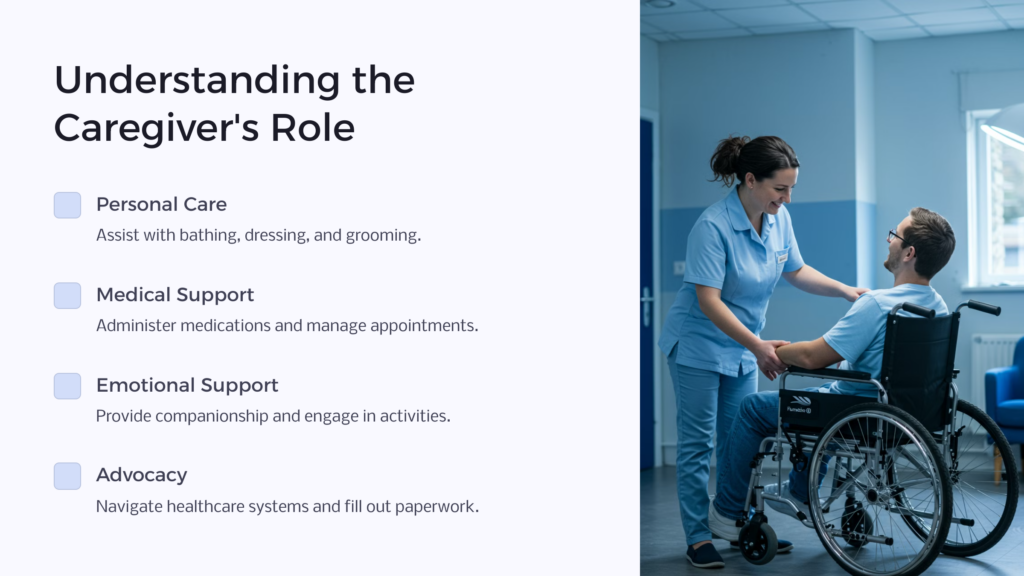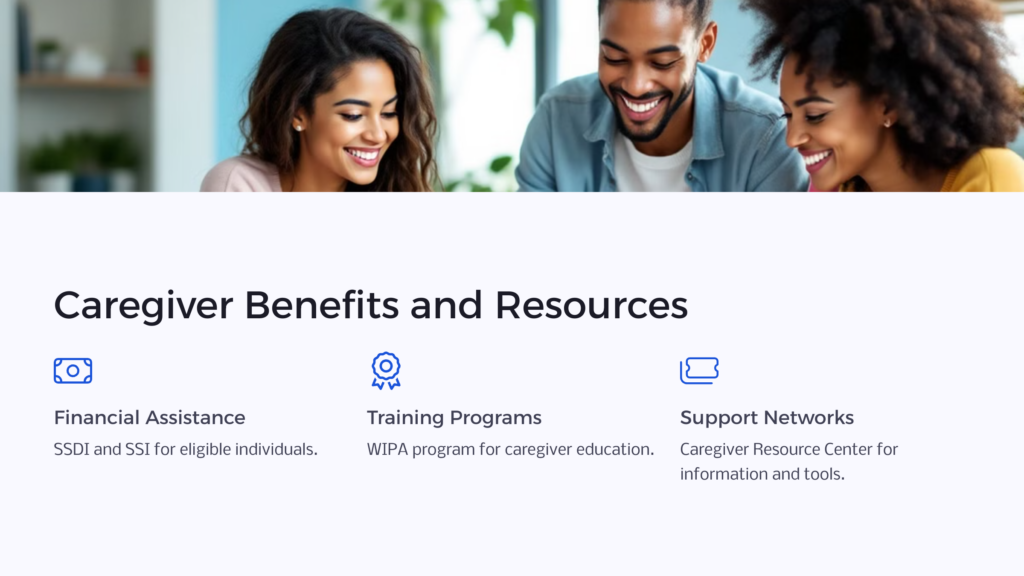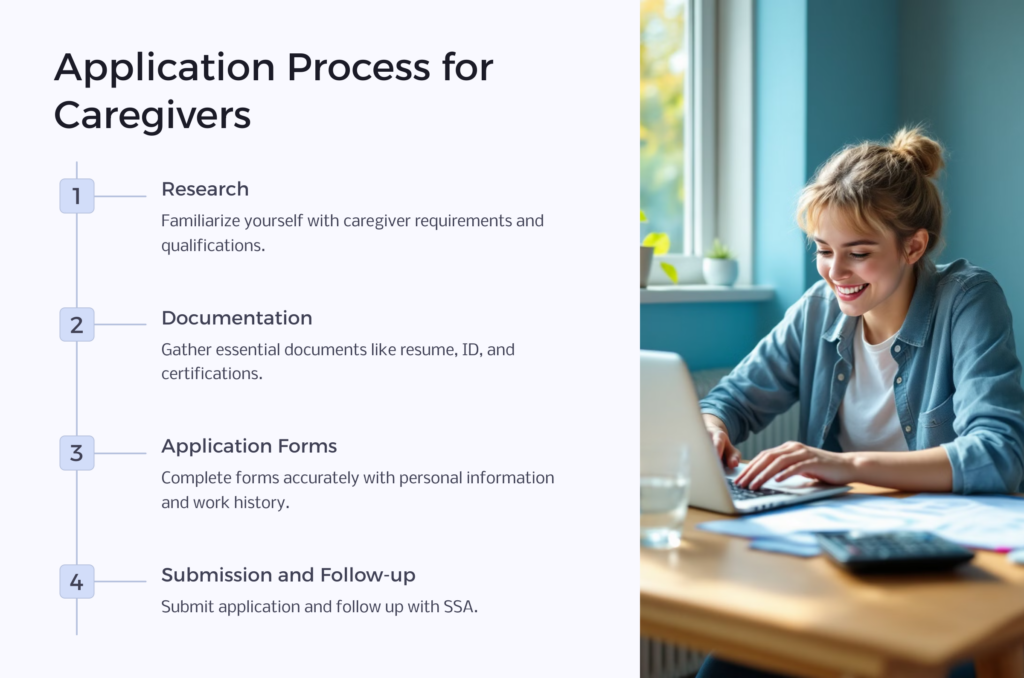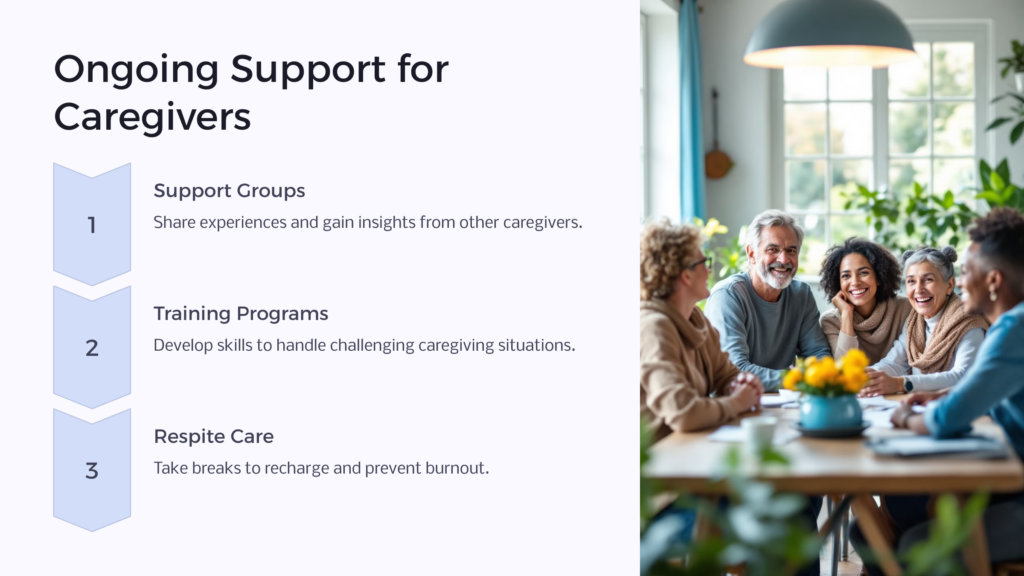Many times, the primary caregiver to a disabled person is an immediate family member, but sometimes the family is unable to help. In this case, a social security disability caregiver will be assigned to help in place of a family caregiver. Even with family caregiver support, these friends and family members are often informal caregivers, and don’t have the time, training, or caregiver resources to fully help. Often, a social security disability caregiver will provide support and visit for in-home care, while the family takes on basic personal care.

A Social Security Disability caregiver plays a crucial role in providing assistance and support to individuals who are disabled and unable to care for themselves due to physical or mental impairments. These caregivers are responsible for addressing the specific needs and challenges faced by disabled individuals, ensuring their well-being, and enhancing their quality of life.
The caregiver’s role encompasses a range of tasks, including personal care such as bathing, dressing, and grooming, administering medications, managing medical appointments, and assisting with mobility or transportation needs. They may also provide emotional support and companionship, and engage individuals in recreational or therapeutic activities to promote social interaction and cognitive development.
Additionally, a Social Security Disability caregiver often acts as an advocate for their care recipient, navigating the complex healthcare and disability systems, filling out the necessary paperwork, and ensuring access to appropriate resources and services to help in paying for long-term care. They are a vital link between disabled individuals, their families, healthcare providers, and government agencies to provide the necessary support.
How Much Do Caregivers Get Paid?
Caregiver pay isn’t always enough income to cover what you need. Many benefits and resources are available to caregivers through the Social Security Administration. Caregivers may be eligible for financial assistance, access to healthcare services, and respite care options.

The Social Security Administration (SSA) provides several benefits and resources to caregivers. One significant benefit is the provision of Social Security Disability Insurance (SSDI) and Supplemental Security Income (SSI) to eligible individuals with disabilities, which may indirectly benefit caregivers by providing financial support to the disabled person they care for.
Caregivers can also access resources like the Caregiver Resource Center, which offers information, tools, and support networks. The SSA’s online portal provides access to various services, including applying for benefits, managing accounts, and accessing educational materials. Additionally, the Ticket to Work program assists disabled individuals in finding employment and offers vocational rehabilitation services, which can alleviate some caregiving responsibilities.
Furthermore, the SSA offers caregiver training through its Work Incentives Planning and Assistance (WIPA) program, equipping caregivers with knowledge of benefit programs, work incentives, and employment opportunities. These resources aim to empower caregivers and enhance their ability to provide effective service while navigating the complexities of the Social Security system.
How to Apply as a Caregiver

Applying as a caregiver is a long process. An applicant must gather the necessary documentation, complete the application forms accurately, and submit the application successfully. By following these instructions on applying, applicants can easily navigate the process.
1. Research
Familiarize yourself with the caregiver position’s requirements, responsibilities, and qualifications through the Social Security Administration (SSA) website or by contacting local SSA offices.
2. Documentation
Gather essential documents such as your resume, identification, proof of citizenship or work eligibility, relevant certifications or licenses, and any supporting materials demonstrating your caregiving experience or qualifications.
3. Application Forms
Obtain the required application forms from the SSA website or local SSA offices. The forms typically include personal information, work history, references, and questions about your caregiving experience and skills.
4. Accuracy
Fill out the application forms accurately and completely, ensuring that all information is current and matches the supporting documentation.
5. Supporting Statements
Include a well-written personal statement highlighting your passion for caregiving, relevant skills, and experience working with disabled individuals.
6. Review
Carefully review the completed application forms and supporting documentation for any errors or omissions.
7. Submission
Submit the application forms and supporting documents either online through the SSA website, by mail, or in person at the local SSA office. Keep copies of all submitted materials for your records.
8. Follow-up
After applying, follow up with the SSA to confirm receipt and inquire about the next steps in the process.
5 Tips for a Strong Application
1. Thoroughly understand the job requirements and tailor your application to highlight relevant skills and experience.
2. Provide accurate and detailed information.
3. Include a well-written personal statement showcasing your passion and dedication to caregiving.
4. Submit all required documentation promptly and keep copies for your records.
5. Follow up with the SSA to ensure your application progresses and address any additional requirements or inquiries.
3 Common Mistakes to Avoid
1. Incomplete or Inaccurate Information
2. Insufficient Supporting Documentation
3. Lack of Tailoring/Generic application
Becoming a caregiver is a significant commitment, and caregivers often require ongoing support. Support groups, training programs, and educational materials to enhance caregiving skills and promote caregiver well-being are invaluable.
Respite care is a service that provides temporary relief and support to Social Security Disability caregivers. It allows caregivers to take a break from their responsibilities by arranging for trained professionals or volunteers to care for their disabled loved ones, allowing caregivers to recharge, reduce stress, and prevent burnout.
How can Caregiver Support Groups Help Me?

Support groups, like a family caregiver support program, provide a safe and understanding environment for caregivers to share their experiences, receive emotional support, learn coping strategies, and gain valuable insights from others facing similar challenges.
Training programs for caregivers offer valuable education and skills development, equipping caregivers with the knowledge and techniques needed to provide effective care, handle challenging situations, and enhance the well-being of the individuals they support.
Becoming a social security disability caregiver is a rewarding and important role. You can confidently pursue a caregiving career by understanding the responsibilities, benefits, and application process. For more information and assistance, please reach out to us!
 Benefits.com Advisors
Benefits.com Advisors
With expertise spanning local, state, and federal benefit programs, our team is dedicated to guiding individuals towards the perfect program tailored to their unique circumstances.
Rise to the top with Peak Benefits!
Join our Peak Benefits Newsletter for the latest news, resources, and offers on all things government benefits.


















